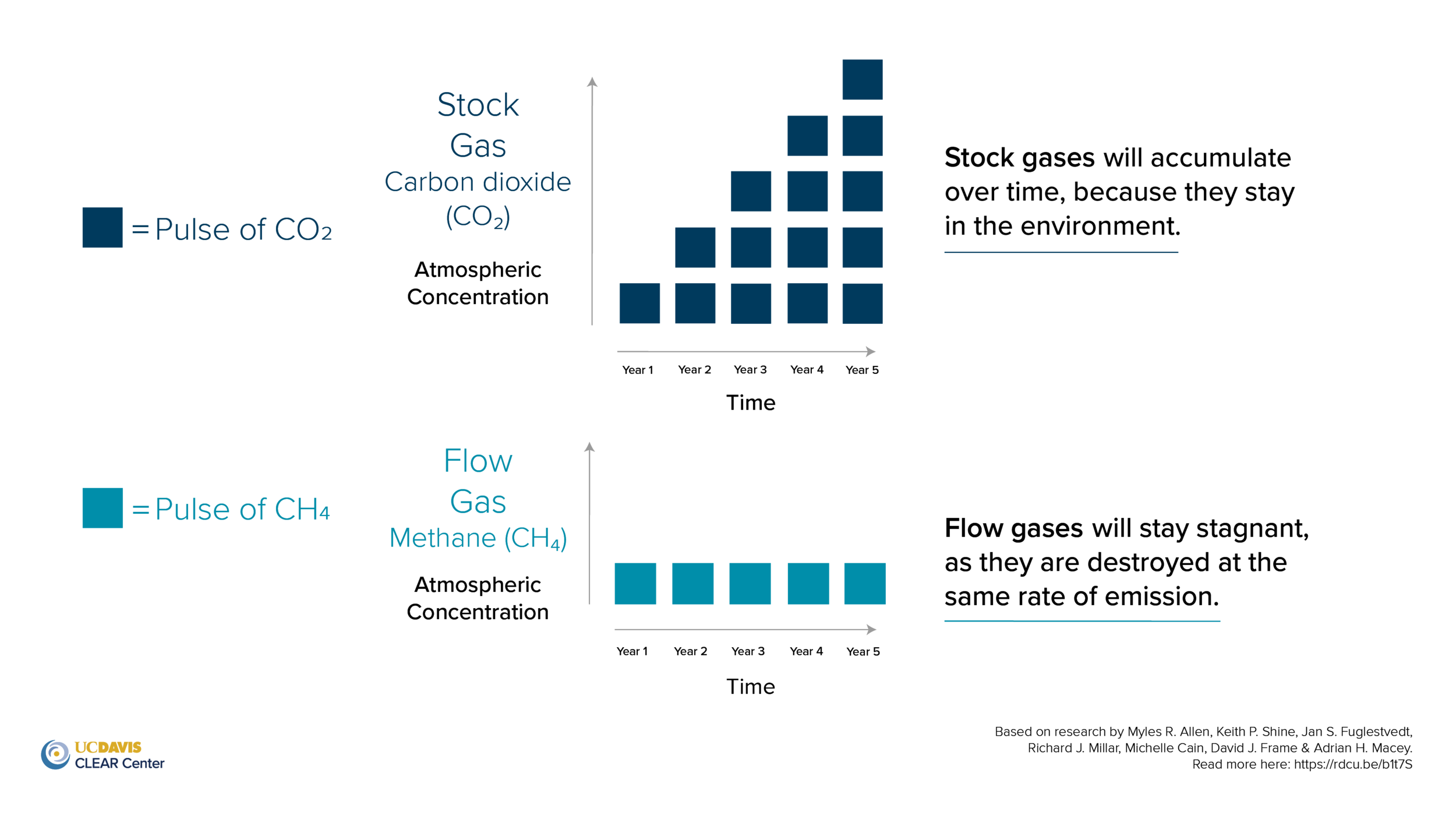Methane Gas and Livestock Farms -- a Win for Agriculture
/Dairy farms—and other livestock operations—can be a leader in the battle against climate change. Farmers have always been conservationists. Farmers take care of their land, in part because they rely on the land. Livestock farms are no different. Methane gas has been in the headlines lately, and for good reason. Methane, along with carbon dioxide and nitrous oxide, are the three main greenhouse gases (GHGs).
Anti-livestock media focuses on dairies and CFOs as being emitters of GHGs, but ignores the details. Methane is a powerful GHG, but it behaves differently than CO2, the main GHG from fossil fuels. According to a recent white paper by Dr. Frank Mitloehner, Dr. Ermias Kebreab, and Michael Boccadoro:
Methane is a short-lived climate pollutant and exists in our atmosphere for 12 years before it’s broken down. This means, when a constant rate of methane is emitted for more than 12 years, one molecule in effect replaces a previously emitted molecule that has since been removed. In other words, methane isn’t accumulating in the atmosphere.
Methane is different than CO2 because CO2 stays in our atmosphere for centuries and accumulates over time. Methane breaks down within about 12 years. As farms take climate-friendly steps (cover cropping, no till, feed additives, modern genetics, increased efficiencies, digesters, etc.), they stabilize methane emissions, which produces a “negative warming” effect—aka actually cooling the atmosphere. Dairy farms, for example, produce less methane than they did in the past, meaning more methane is being broken down than is being emitted into the atmosphere.
I recently attended a wonderful presentation by Dr. Mitloehner at the Indiana Dairy Producers Forum and this approach made a lot of sense to me. He provided the following graphic to explain how CO2 (carbon dioxide) stays in the atmosphere while CH4 (methane) is destroyed at roughly the same rate it is emitted:
Image from UC Davis Department of Animal Sciences, Clarity and Leadership for Environmental Awareness and Research, at https://clear.ucdavis.edu/news/methane-cows-and-climate-change-california-dairys-path-climate-neutrality.
The point is that even a slight reduction in methane will create a cooling effect. The same cannot be said for CO2. This means livestock farms—especially dairies—have a real opportunity to be the leaders in the movement toward climate neutrality. Media and anti-livestock groups should not be allowed to tell the story of animal agriculture. We have a great story to share.




